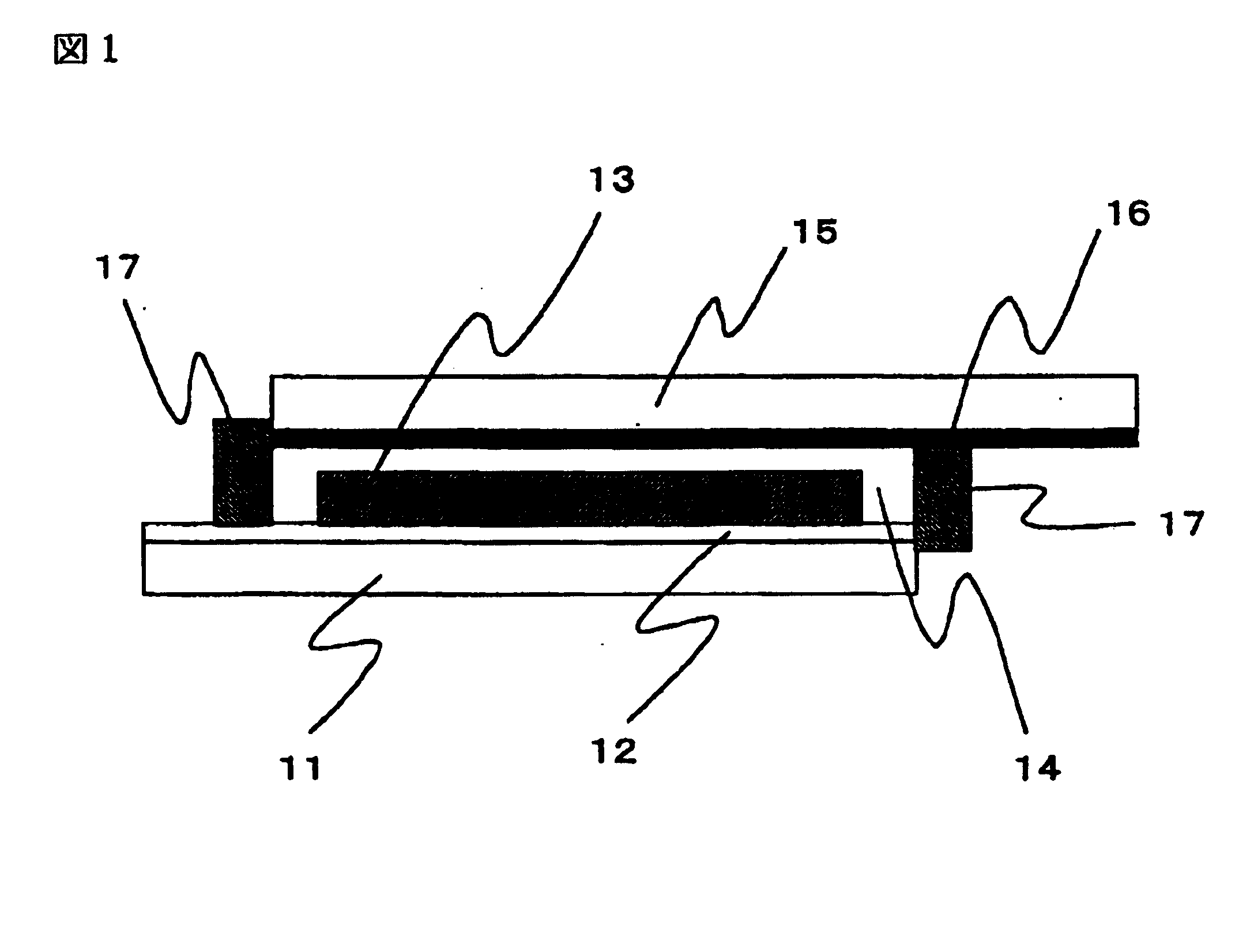Dye-sensitized solar cell
a solar cell, dye-sensitized technology, applied in the direction of non-aqueous electrolyte cells, electrochemical generators, electrolytic capacitors, etc., can solve the problems of difficult to quantify the concentration of iodine in the gel electrolyte, difficult to cause the gel electrolyte to penetrate into the pores, and difficult to achieve the effect of gel electrolyte penetration
- Summary
- Abstract
- Description
- Claims
- Application Information
AI Technical Summary
Benefits of technology
Problems solved by technology
Method used
Image
Examples
example 1-1
A dye-sensitized solar cell utilizing a polymer solid electrolyte was prepared in a following method, and a conversion efficiency thereof was evaluated.
A preparation process for the dye-sensitized solar cell will be explained with reference to FIG. 2. In FIG. 2, (a) to. (c) are schematic cross-sectional views of a dye-sensitized solar cell, following preparation steps thereof. In FIG. 2, there are shown a transparent substrate 1, a transparent conductive film 2, a titanium oxide film 3, a separator 4, a platinum film 5, a conductive substrate 6, and a gel electrolyte layer 7.
On a transparent substrate 1 formed by a glass, a transparent conductive film 2 of SnO2 was formed by vacuum evaporation, and a titanium oxide film 3 was formed on the transparent conductive film 2 by a following method.
As a titanium oxide suspension for forming the titanium oxide film 3, there was employed a commercially available titanium oxide suspension (manufactured by Solaronix Inc., trade name: Ti-...
example 1-2
There were employed 1.3 g of trimethylolpropane-denatured tolylene diisocyanate (manufactured by Nippon Polyurethane Industry Co., trade name: Coronate L) as the compound A, 10 g of polyetheramine (manufactured by Huntsman Corp., trade name: Jeffamine T-5000) as the compound B, and 101.7 g of the liquid electrolyte.
example 1-3
There were employed 4.2 g of a compound obtained by a following synthesis method 1-2 as the compound A, 2 g of polyetheramine (manufactured by Huntsman Corp., trade name: Jeffamine T-5000) as the compound B, and 200 g of the liquid electrolyte.
(Synthesis Method 1-2)
In a reaction vessel, there were charged 92 g of glycerin as a starting material and 30 g of potassium hydroxide as a catalyst. There were also charged 5,950 g of ethylene oxide and 3,970 g of propylene oxide, and after a reaction for 10 hours at 130° C., a neutralization-dehydration process was executed to obtain an ethylene oxide-propylene oxide copolymer of a molecular weight of 10,000. To 100 g of the obtained compound, 5.3 g of tolylene diisocyanate and 0.05 g of dibutyl tin dilaurate as a catalyst were added and reacted for 3 hours at 80° C. to obtain a compound of a molecular weight of 10,520.
PUM
| Property | Measurement | Unit |
|---|---|---|
| transparent | aaaaa | aaaaa |
| transparent conductive | aaaaa | aaaaa |
| conductive | aaaaa | aaaaa |
Abstract
Description
Claims
Application Information
 Login to View More
Login to View More - Generate Ideas
- Intellectual Property
- Life Sciences
- Materials
- Tech Scout
- Unparalleled Data Quality
- Higher Quality Content
- 60% Fewer Hallucinations
Browse by: Latest US Patents, China's latest patents, Technical Efficacy Thesaurus, Application Domain, Technology Topic, Popular Technical Reports.
© 2025 PatSnap. All rights reserved.Legal|Privacy policy|Modern Slavery Act Transparency Statement|Sitemap|About US| Contact US: help@patsnap.com



